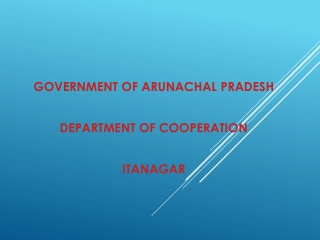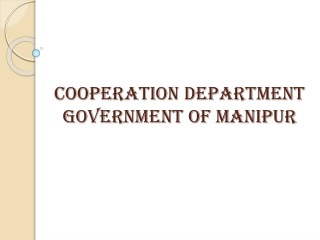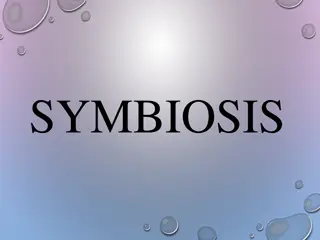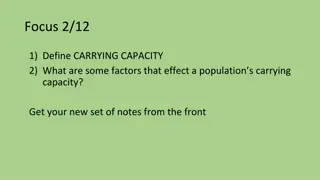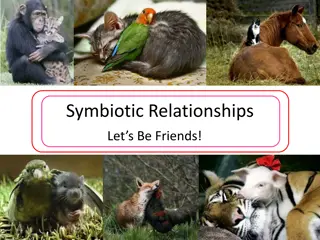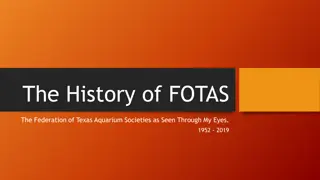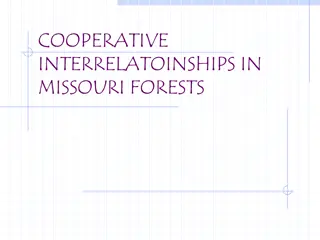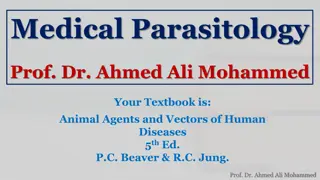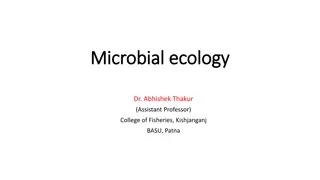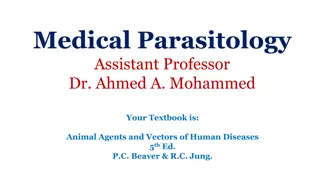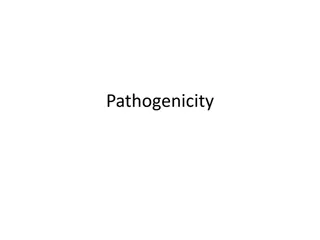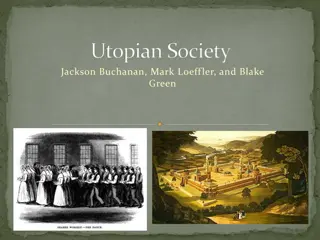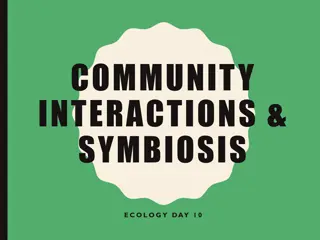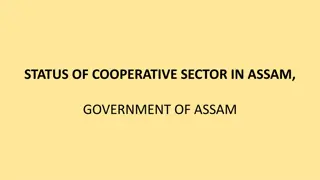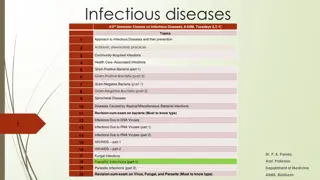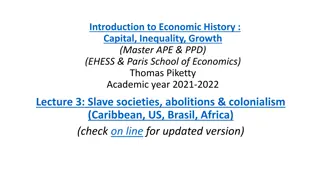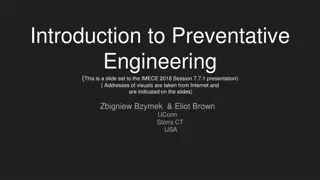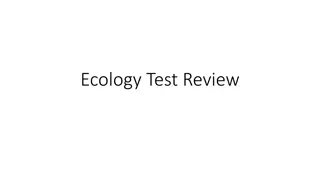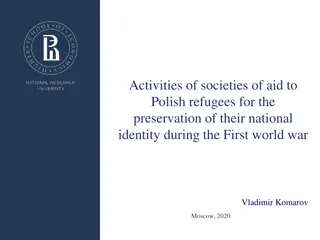Evolving Human Societies: From Parasitism to Mutualism with Earth
Human societies can transition from parasitic relationships with the Earth to mutualistic ones, mirroring examples from nature. Explore the concepts of parasites and mutualists in both ecological and human contexts, and consider Earth as a host and organism interconnected in delicate balance. Reflect on how human activities can either harm or benefit the Earth, and the importance of evolving towards mutualistic relationships for a sustainable future.
Download Presentation

Please find below an Image/Link to download the presentation.
The content on the website is provided AS IS for your information and personal use only. It may not be sold, licensed, or shared on other websites without obtaining consent from the author. Download presentation by click this link. If you encounter any issues during the download, it is possible that the publisher has removed the file from their server.
E N D
Presentation Transcript
Lesson: How Can Human Societies Evolve from Parasitism to Mutualism with Earth? This nest of the eastern phoebe has one brown-headed cowbird egg. The phoebe has been parasitized. Image by Galawebdesign, 3.0.
What Are Parasites? Parasites are predators that weaken their host by feeding on the host s body or by sapping the host s resources. In the image to the left, a parasitic crustacean has entered a host fish s body and attached to the tongue. The parasite feeds on the tongue and eventually other parts of the host, until the host dies. Image by Marco Vinci via Wikimedia 3.0. Now consider this image (right) of a surface mine that produces lignite, a form of soft brown coal. This image shows its devastating impacts on local ecosystems and implies its global impacts in contributing to climate change. Is this human activity parasitic to our host? Image by Martin Falbisoner via Wikimedia, 4.0. 1
What Are Mutualists? Mutualists are symbiotic species that have co-evolved for mutual benefit. In the image to the left, a yellowstripe coris receives beneficial grooming from a scarlet cleaner shrimp and the shrimp gets a meal. Image is public domain via NOAA. Image by Oceanflynn via Wikimedia Commons, 4.0. Now consider this image (right) of a restored gravel pit site in Calgary Olympic Park. The degraded site now absorbs and filters stormwater in coordination with the adjacent stream and meadow, and it provides a public art piece for contemplation. Is this human activity mutualistic with our host? 2
Earth as Host, Earth as Organism Our home planet is an evolving, delicately balanced complex of interlocking systems. We can understand these systems in isolation, as the geosphere, the biosphere, and the atmosphere. But we can also understand them in synergy as physical conditions affect biological life and vice versa. An obvious example is how mining the geosphere liberates ancient carbon, which we burn, and alters the chemical composition of the atmosphere, which has complicated and emergent effects on biological life across the planet. Public domain image courtesy of NASA. 3
Earth as Host, Earth as Organism Many find the Gaia hypothesis to be a useful metaphor for considering how Earth s interlocking systems work as a kind of homeostasis in the global body. Certain ecosystems, like the Amazon rainforest and deciduous forests, act as lungs that oxygenate the global atmosphere. We can see each annual breath taken by the planet in the annual zigzags of the Keeling Curve. The long-term trend toward higher carbon dioxide concentrations is a central element of human-caused imbalance in the atmosphere, which has increasing, malignant effects across Earth systems. The Keeling Curve. Public domain image. 4
How Dare You? Im Not a Parasite! We may resent feeling blamed for environmental degradation because many degrading activities are simply related to survival: eating, drinking, acquiring resources, and having a cozy place to live. This lesson challenges us to consider not how individuals but cultures and their values prescribe certain relations with the non-human world. These relations may be extractive and wasteful (parasitic) or restorative and sustainable (mutualistic). Our cultural identity influences what behavior we think is normal, virtuous, or malignant. Different cultures may perceive the same activity very differently. Public domain image from MassDOT via Wikimedia Commons. 5
Areas of Inquiry for this Lesson Your challenge: To research, dream, and redesign a parasitic activity so that it becomes a mutualism that benefits Earth. Infrastructure: Gray Petroculture to Green Community Culture Agriculture: Monocrop Soil Extraction to Regenerative Polyculture Waste: Mountains of Plastic to Marvelous Circularity Communication: Greenwashing to Creative Righting and Useful Dreaming Fragmented Ecosystems: Invasive Eyesores to Novel Communities and Eco-Social Resources Sociology and Psychology: Inequality and Nature Deficit to Inclusion and Immersion 6


